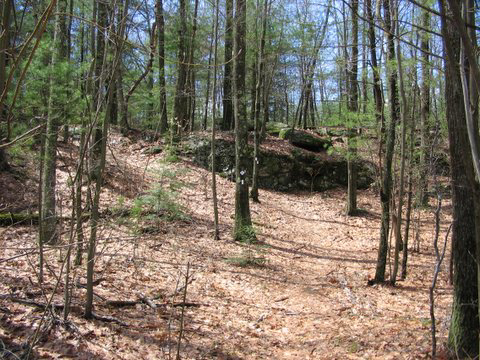Forest Stewardship: The Idea of Site
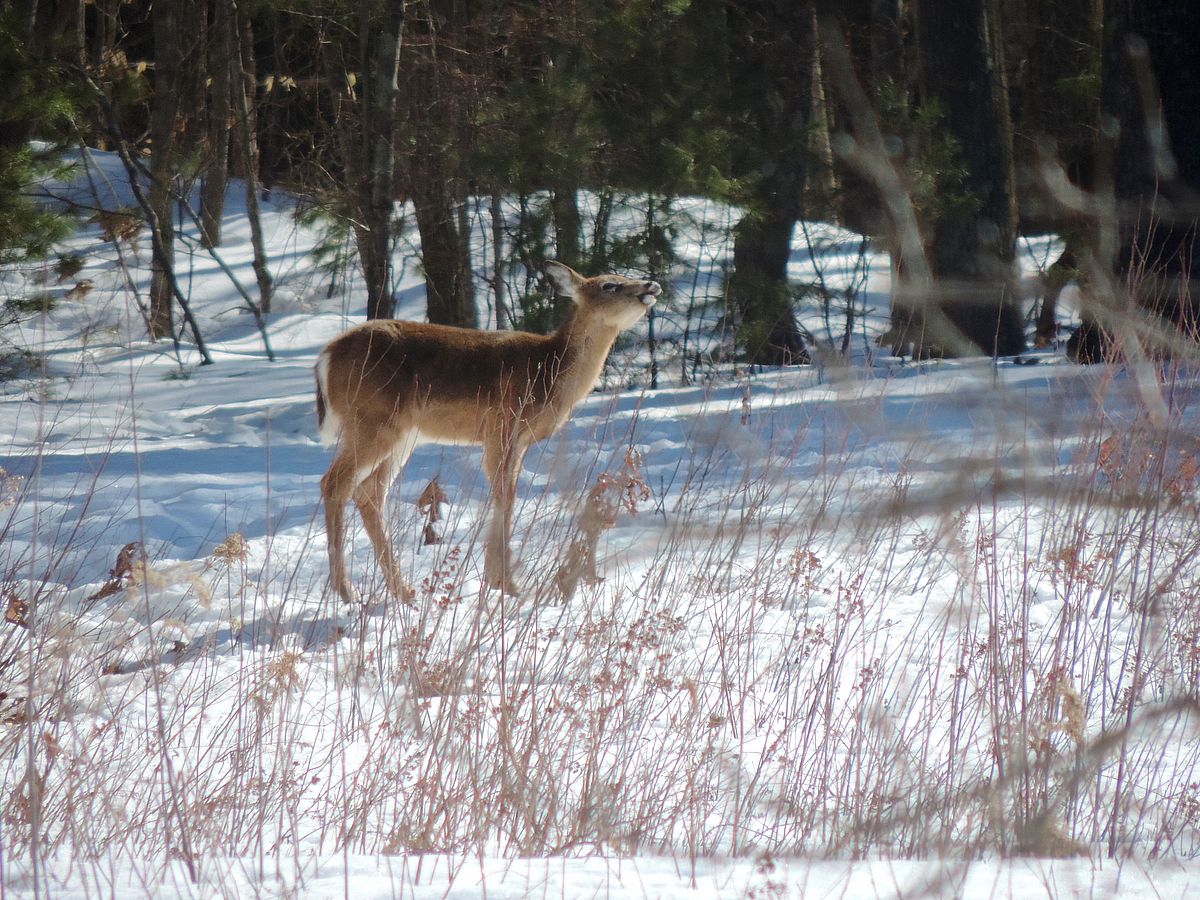
Forestry is an applied thing, drawing on many of the natural and social sciences. The notion of “site” is central to forestry, and it too is an integrated concept, defined vaguely as “the total environment of a place,” but subject to a range of ways to quantify and classify.
What are the things that make a site what it is and differentiate it from other sites? Think of a chunk of woods that you know well. When you visualize the variety of places in those woods, some of what you’re doing is recognizing a variety of sites. The list of things that make a site is long, but ultimately combine to create a particular set of temperature, moisture, light and nutritional conditions. The diagram below, taken from a well-known forest ecology textbook, gives you some idea of the variables involved in affecting how a site may influence plant growth.
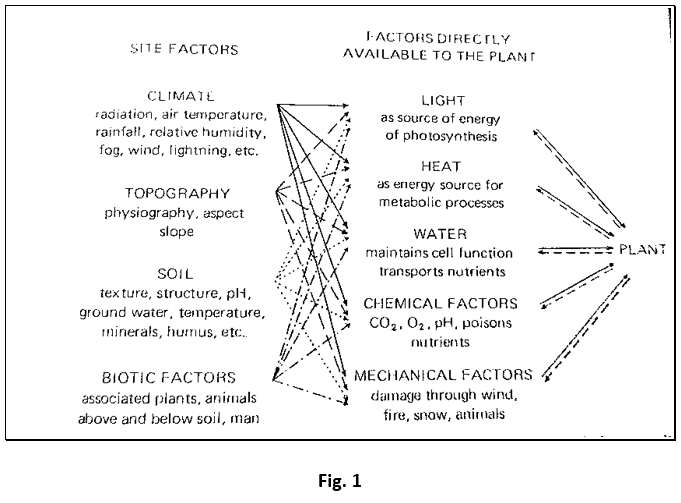
If site determines plant growth, it would be fair to ask whether a map of “stands” corresponds exactly to a map of “sites.” It might, but probably doesn’t. Site characteristics change very slowly when they change at all; stand characteristics, which include type, density, and size of vegetation, can change in a flash due either to natural disturbances or human activity such as timber harvesting or stand improvement.
In New England, characteristics that tend to be the most powerful site determinants include aspect, elevation, soil type and depth, and slope position. Together, these things determine amount of solar radiation, extreme temperatures, water availability, and of key nutrients potentially available to plants.
It is very difficult (and expensive) to change or improve site quality. In other US regions, and in some tree-growing regions around the world where “intensive forestry” is practiced, you may see forest fertilization, irrigation, drainage, prescribed burning, raised beds for planting, and tree breeding geared to taking advantage of specific nutritional conditions. Such practices are virtually non-existent in the complex, natural forests of our area.
Just as there is a range of site types and conditions, there are various methods for classifying and grouping sites according to their productivity.
Key concept #1: the amount of vegetation (biomass) that a given site can produce over a certain period is pretty much fixed (unless resorting to the “intensive” practices already described). Interventions to manage the vegetation don’t alter the inherent productivity of the site. Instead, they direct the productive potential to some plants at the expense of others.
Key concept #2: for a given species, higher productivity shows up as greater height at a given age, at least for the first half-century or so. (Better nutrition and hydration = taller tree). Height growth is far more strongly associated with site quality than diameter growth.
*** (These concepts are slight oversimplifications but are valid and among the most important in forestry.) ***
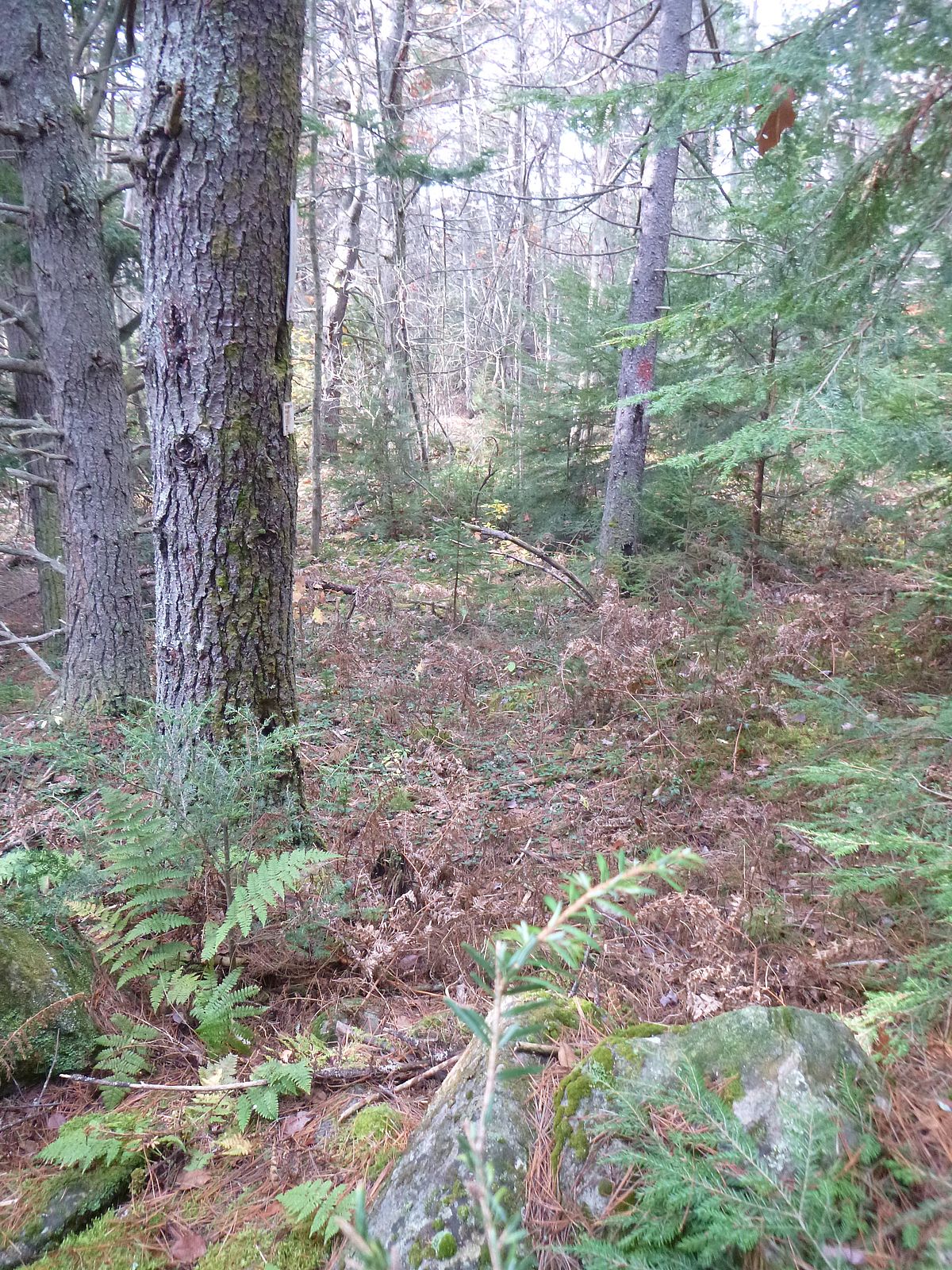
Site classification methods depend in part on the purpose of the classification and on the ease of observing or measuring important variables. Where the aim is to group sites in terms of the total amount of wood (or carbon) that can be produced annually, current practice generally recognizes five groupings in our region:
a) less than 20 cubic feet per acre per year (CF/A/Y)
The great majority of sites in the North Quabbin region fall in the (b) or (c) range. |
b) 20 – 50 CF/A/Y
c) 50 – 85 CF/A/Y
d) 85 – 120 CF/A/Y
e) greater than 120 CF/A/Y
Perhaps the best-known method for rating sites is the site index method. A common species is chosen and its height graphed against its age. In the northeast, it is typical to express site index at an index age of 50. A set of curves is generated, as shown in the illustration below, which is for sugar maple in Vermont. The arrow shows that a sugar maple on a Site Index 60 site will be 60 feet tall at age 50. The curves allow for interpolation of height on that site at different ages. So, for example, a 30-year old tree on a site Index 50 site would be expected to be about 35 feet tall.
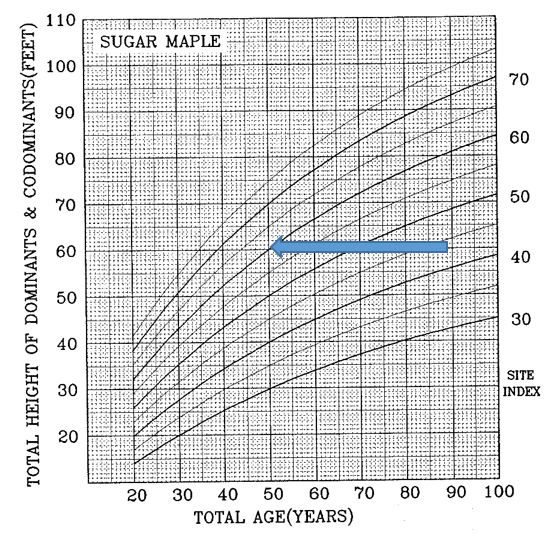
Site index ratings differ – sometimes dramatically – by species. Generally, all species do well on the best fertile, deep, well-drained soils if free to grow. But, sites with nutritional or moisture limitations are far more limiting for some species than others. So, for example, a site that grows white pine very well might be mediocre for growing red oak.
The site index method is widely used because height is easily measured, but the method has some serious limitations, most of which are too technical to discuss here. One limitation to note is that the method is geared primarily toward estimation of wood production potential. Mapping and site description for broader ecological objectives are less well-served by the site index method.
Other important approaches to site classification are based on vegetation or soil indicators. “Indicator plants” can be very useful in site delineation in some regions. The result is a more nuanced and sophisticated classification scheme. Understory plant communities are valuable in helping to distinguish among sites that may have very similar overstory composition. Similarly, site variability in our glaciated landscape can be highlighted by distinctive soil characteristics. A caution - soil mapping is practical only at a certain scale; and digging soil pits and analyzing the data is expensive and labor-intensive.
The next time you are walking in a section of woods that you frequent, stop anywhere and try to assess the things that make the site what it is. Move on to a visibly different, but nearby, patch of woods. What do you think makes the two sites different? Mark or note your locations, and then, if you’re ambitious, get onto the Web Soil Survey and explore the information there about the places you just visited.
Fig. 1 – from Spurr and Barnes, Forest Ecology
Fig. 2 – from USDA Forest Service, Site Index Curves for Forest Tree Species in the Eastern United States
Charlie Thompson is a retired forester, member of original board of Mount Grace, current board member of MA Forest Alliance, co-author of Working with your Woodland and More than a Woodlot. He is a woodlot owner in MA and VT.
